Recent Posts
Why smoke detectors are essential for home safety
12/11/2024 (Permalink)
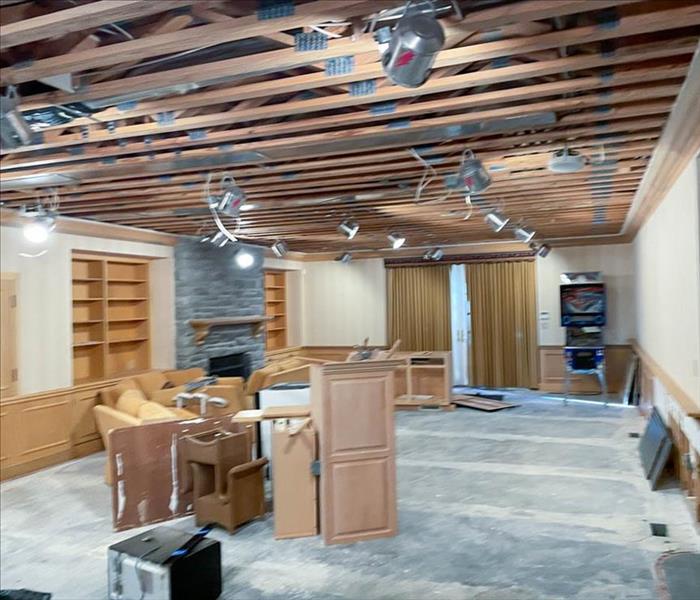 Smoke detectors are a simple, inexpensive, yet essential tool in protecting your home and family.
Smoke detectors are a simple, inexpensive, yet essential tool in protecting your home and family.
Smoke detectors are one of the most crucial safety devices you can have in your home. They provide an early warning system that helps prevent fire-related disasters, saving lives and property. In this blog, we’ll discuss why smoke detectors are essential for home safety, provide expert insights, and share a key statistic to highlight their importance.
Early Detection Saves Lives
One of the primary benefits of smoke detectors is their ability to detect fires at their earliest stages. According to the National Fire Protection Association (NFPA), three out of five home fire deaths occur in properties without working smoke alarms. Having a properly installed and functioning smoke detector gives homeowners those precious extra minutes to evacuate or address a small fire before it grows out of control.
Smoke Detectors Are Cost-Effective Safety Tools
Smoke detectors are affordable and easy to install, making them one of the best investments for your home’s safety. Basic models are available for less than $20, while more advanced ones, with features like interconnectivity and carbon monoxide detection, still remain within an affordable price range. These devices require little maintenance—just a simple battery check twice a year and replacement every 10 years. The small cost of maintaining your smoke detectors is far outweighed by the peace of mind they provide.
The Role of Interconnected Smoke Detectors
For enhanced home safety, interconnected smoke detectors are highly recommended. When one smoke detector is triggered, all the alarms in your home sound off simultaneously, ensuring that everyone is alerted, no matter where they are in the house. This feature is particularly useful in larger homes or multi-story residences.
Tips for Proper Smoke Detector Placement
For maximum effectiveness, consider the following when installing smoke detectors:
- Install a smoke detector on every level of your home.
- Place detectors inside each bedroom and outside sleeping areas.
- Ensure detectors are at least 10 feet away from the kitchen to reduce false alarms.
- Avoid placing detectors near windows or air vents, as drafts can interfere with their operation.
Regular Maintenance Is Key
Like all devices, smoke detectors require maintenance. Test your smoke detectors at least once a month to ensure they are functioning properly. Replace batteries at least once a year, or as soon as the low battery warning chirps. Following these basic maintenance tips will help ensure your smoke detectors work when you need them the most.
Smoke detectors are a simple, inexpensive, yet essential tool in protecting your home and family. By installing them throughout your home and regularly maintaining them, you significantly reduce the risk of fire damage and increase your safety. Remember, at SERVPRO of Clayton/Ladue, we’re available to help you recover from fire damage and ensure your home is as safe as possible.
Signs of Mold Infestation: What to Look For
11/13/2024 (Permalink)
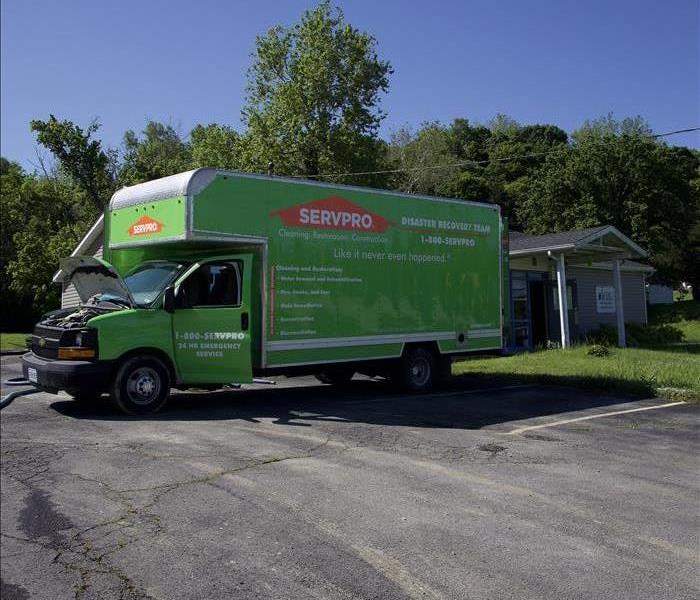 If mold is found, experts can also provide guidance on the best course of action to remediate the issue.
If mold is found, experts can also provide guidance on the best course of action to remediate the issue.
Mold is a common issue in homes, especially in areas with high humidity or past water damage. If left untreated, mold can cause significant structural damage. Recognizing the early signs of mold infestation is crucial to prevent costly repairs and protect your home. Here, we’ll cover the key indicators of mold growth and when to seek professional help.
Visual Signs of Mold Growth
Visible mold is one of the most obvious signs of a problem. Mold can appear in various colors, including black, green, white, or orange, and it often shows up as spots or streaks on walls, ceilings, and other surfaces. Mold thrives in dark, damp environments, so check under sinks, behind appliances, and in basement corners.
Common Locations for Mold Growth
- Bathrooms: High moisture from showers and baths makes bathrooms a prime spot for mold. Inspect around tiles, grout lines, and near any leaks.
- Kitchens: Mold can grow around sinks, dishwashers, and refrigerators. Be sure to check behind appliances and inside cabinets.
- Basements: Due to higher humidity levels, basements are susceptible to mold. Look for it on walls, floors, and around windows.
- Attics: Poor ventilation and roof leaks can lead to mold growth in attics, particularly around roof vents and chimneys.
Musty Odors: A Hidden Sign of Mold
Even if mold isn’t visible, you might notice it by its smell. Mold produces a distinct, musty odor, often compared to the smell of wet socks or rotting wood. This odor is a strong indicator that mold is growing somewhere in your home, even if it’s hidden behind walls or under flooring. If you detect a persistent musty smell, it’s essential to investigate further.
Water Damage and Stains
Water damage is a major precursor to mold growth. If your home has experienced any water damage—from a leaky roof, burst pipe, or flooding—inspect the affected areas for mold. Water stains on ceilings, walls, or floors are red flags that moisture has seeped in, possibly creating the ideal environment for mold to thrive.
Discoloration and Peeling Paint
Mold doesn’t always appear as distinct spots; sometimes, it manifests as discoloration or peeling paint. If you notice areas where the paint is bubbling, cracking, or peeling away, it could be a sign of moisture build-up behind the walls, which can lead to mold growth. Discoloration, such as yellow or brown patches on walls or ceilings, is another indicator that mold might be present.
Warped Walls and Flooring
Mold can cause structural damage if left unchecked. Warped walls or buckled flooring are signs that moisture has penetrated deep into your home’s structure. This is often accompanied by mold, especially in areas with past water damage.
When to Call in the Experts
While many signs of mold can be detected through a visual inspection, some mold issues may be hidden within walls, under flooring, or in other inaccessible areas. In these cases, it’s crucial to bring in a professional mold inspection service. According to the Environmental Protection Agency (EPA), around 85% of U.S. homes have some level of moisture that could lead to mold growth.
Professional mold inspections can provide a thorough evaluation of your home using tools like moisture meters and infrared cameras to detect hidden mold. If mold is found, experts can also provide guidance on the best course of action to remediate the issue and prevent future infestations.
Mold can cause significant damage to your home, but by staying vigilant and knowing what to look for, you can catch infestations early and address them before they become serious. Regularly inspect areas prone to moisture, and be on the lookout for visual signs of mold, musty odors, and water damage.
If you suspect mold in your home, contact SERVPRO® of Clayton/Ladue. Our team of experts is equipped to handle mold inspections, remediation, and restoration, ensuring your home is safe and mold-free.
Essential Guide: Creating a Family Emergency Plan for Water-Related Incidents
10/9/2024 (Permalink)
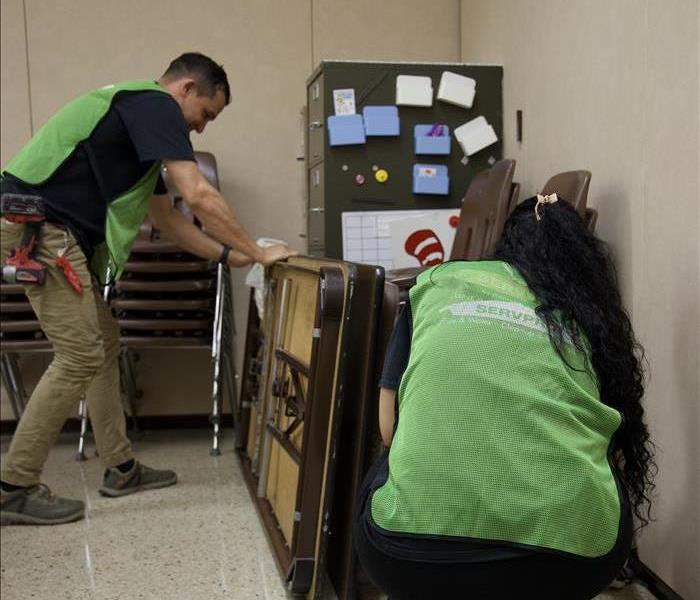 Preparing a family emergency plan for water-related incidents is crucial for ensuring the safety and security of your loved ones and property.
Preparing a family emergency plan for water-related incidents is crucial for ensuring the safety and security of your loved ones and property.
Water-related incidents in the home are more common than you might think. According to the Insurance Information Institute, water damage is one of the most frequent and costly disasters in homes, accounting for 29 percent of all homeowner insurance claims in 2019. Given this reality, preparing a family emergency plan for water-related incidents is crucial for ensuring the safety and security of your loved ones and property.
Understanding the Risks
Water-related incidents can range from minor leaks to significant flooding caused by natural disasters or plumbing failures. Such events can lead to severe damage, costly repairs, and even pose health risks due to mold growth. It's essential to understand these risks to develop a comprehensive emergency plan tailored to your family's specific needs.
Key Components of a Family Emergency Plan
1. Identify Potential Water-Related Hazards
Start by identifying potential water-related hazards in your home. This includes checking the condition of pipes, understanding the risks of living near flood-prone areas, and being aware of the weather patterns that could lead to flooding. Regular maintenance and inspections can help prevent incidents from happening or minimize their impact.
2. Develop a Communication Plan
Establish a communication plan that includes emergency contact information for all family members and key services like SERVPRO® for emergency water damage restoration. Designate a meeting place where everyone can gather if evacuation becomes necessary. Ensure that all family members, including children, understand the plan and know what to do in an emergency.
3. Create an Emergency Kit
Prepare an emergency kit that includes essentials such as water, non-perishable food, a flashlight, batteries, a first aid kit, and important documents. Store the kit in an easily accessible location, and regularly update it to ensure everything is in working order and not expired.
4. Practice and Review
Conduct regular drills to ensure everyone is familiar with the emergency plan and can respond quickly and efficiently. Review the plan annually and update it as necessary, considering any changes in the household or the environment.
Creating a family emergency plan for water-related incidents is not just a precaution—it's a necessity, especially in St. Louis, MO. By taking proactive steps, you can protect your home and loved ones from the potentially devastating effects of water damage. Remember, in the event of an emergency, companies like SERVPRO are Here to Help® with professional water damage restoration services, ensuring your home is restored quickly and efficiently. Stay safe and prepared!
Winter Storm Cleanup Tips for Residents in St. Louis, Missouri
9/11/2024 (Permalink)
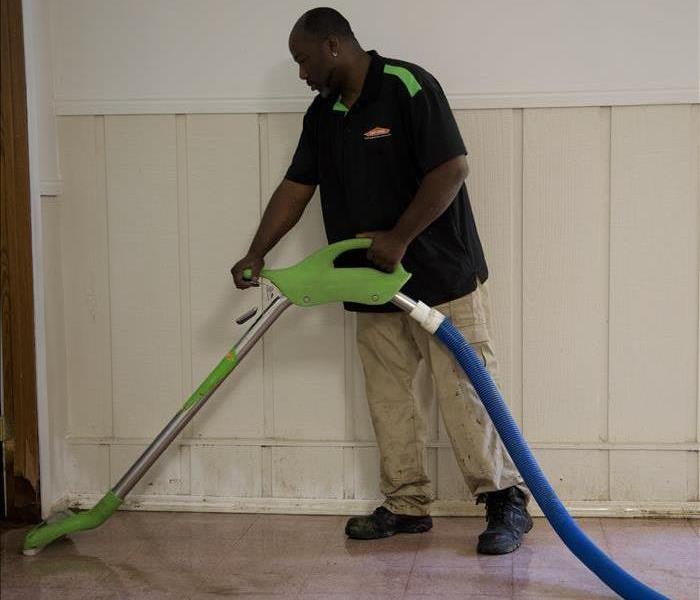 Here are some essential winter storm cleanup tips tailored for St. Louis residents.
Here are some essential winter storm cleanup tips tailored for St. Louis residents.
Winter storms can leave behind a trail of destruction, and St. Louis, Missouri, is no stranger to such harsh weather. Whether it's heavy snow, ice storms, or strong winds, preparing and cleaning up after a winter storm is crucial to ensure the safety of your home and family. Here are some essential winter storm cleanup tips tailored for St. Louis residents.
Assessing the Damage
After a winter storm, the first step is to assess the damage. Check your property for any signs of damage, such as fallen trees, broken branches, or roof damage. Be cautious and wear protective gear, as the aftermath of a storm can present various hazards.
Clearing Snow and Ice
Clearing snow and ice is vital for preventing accidents and further damage. Use a sturdy shovel to remove snow from walkways and driveways. For ice, spread rock salt or an ice melt product to create a safer surface. According to the Federal Emergency Management Agency (FEMA), snow and ice removal can significantly reduce the risk of slip and fall injuries, which account for over 30 percent of winter storm-related emergency room visits.
Dealing with Fallen Trees and Branches
Fallen trees and branches are common after winter storms in St. Louis. Use a chainsaw to cut large branches into manageable pieces, but only if you are experienced in using this equipment. For larger trees, it is best to contact a professional tree removal service to safely handle the job.
Checking the Roof and Gutters
Heavy snow and ice can cause significant damage to your roof and gutters. Clear any accumulated snow from your roof using a roof rake. Inspect gutters for ice dams and clear them to prevent water damage. If you notice any damage, such as missing shingles or leaks, contact a roofing professional for repairs.
Water Damage Prevention
Winter storms can lead to water damage due to melting snow and ice. Ensure that your home's foundation is clear of snow to prevent water seepage. Inside your home, use a dehumidifier to control moisture levels and prevent mold growth.
Hiring Professional Cleanup Services
For extensive damage or if you’re unsure about handling the cleanup yourself, hiring professional cleanup services like SERVPRO® is a smart choice. Our experienced team is equipped to handle all aspects of winter storm cleanup, from water damage restoration to debris removal.
Preparing for Future Storms
Preparation is key to minimizing damage from future winter storms. Keep an emergency kit on hand, ensure your home is well-insulated, and have a plan in place for snow and ice removal. Regular maintenance of trees and roofs can also prevent extensive damage during storms.
By following these winter storm cleanup tips, St. Louis residents can ensure their homes and families stay safe and secure during the harsh winter months. Remember, prompt and proper cleanup is crucial to preventing further damage and maintaining a safe living environment.
Protect Your Loved Ones: How to Create a Fire Safety Plan for Your Family
8/14/2024 (Permalink)
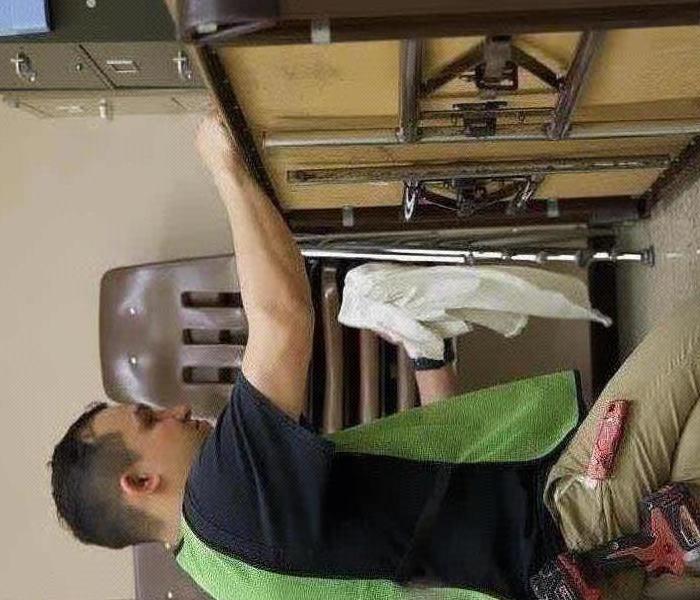 Follow this guide to create an effective fire safety plan for your family.
Follow this guide to create an effective fire safety plan for your family.
When it comes to protecting your family, having a well-prepared fire safety plan is crucial. In St. Louis, MO, where historic homes and modern residences intertwine, it's essential to be proactive in safeguarding your loved ones from the potential dangers of a fire. Follow this guide to create an effective fire safety plan for your family.
Understanding the Importance of a Fire Safety Plan
A fire safety plan is not just a checklist; it is a comprehensive strategy to ensure that everyone in your household knows what to do in case of a fire. This plan can be the difference between safety and tragedy. By preparing in advance, you give your family the best chance of escaping a fire unharmed.
Steps to Create Your Fire Safety Plan
1. Conduct a Home Fire Inspection
Begin by identifying potential fire hazards in your home. Check for:
- Frayed electrical cords
- Overloaded power outlets
- Unattended candles
- Flammable materials near heat sources
In St. Louis, older homes might have outdated wiring or other specific risks. Address these issues promptly to reduce fire risk.
2. Install and Maintain Smoke Alarms
Ensure that smoke alarms are installed in every bedroom, outside sleeping areas, and on every level of your home. Test them monthly and replace batteries at least once a year. Smoke alarms are your first line of defense, providing early warning signs of a fire.
3. Create an Escape Plan
Develop a detailed escape plan tailored to your home’s layout. Identify two ways out of every room, typically through doors and windows. Involve all family members in the planning process and ensure everyone understands the escape routes.
4. Establish a Meeting Point
Designate a safe meeting spot outside your home where everyone can gather after escaping. This could be a tree, a neighbor’s house, or a specific spot in your yard. Make sure it’s far enough away from the house to avoid danger but close enough for easy access.
5. Practice Regular Fire Drills
Conduct fire drills at least twice a year to ensure everyone can execute the plan quickly and efficiently. Practice both during the day and at night to prepare for different scenarios.
6. Teach Fire Safety to Children
Educate your children about the dangers of fire and the importance of the fire safety plan. Teach them how to stop, drop, and roll if their clothes catch fire and how to use the escape routes.
SERVPRO®: Your Partner in Fire Safety
SERVPRO is committed to helping you keep your family safe. From fire damage restoration to proactive safety tips, our team is here to support you. Contact us for more information on how we can assist in making your home a safer place.
Creating a fire safety plan is an essential step in protecting your loved ones. By following these guidelines, you can ensure that your family is prepared to respond quickly and effectively in the event of a fire. Remember, preparation today can save lives tomorrow.
Common Causes of Mold Growth in Homes
7/10/2024 (Permalink)
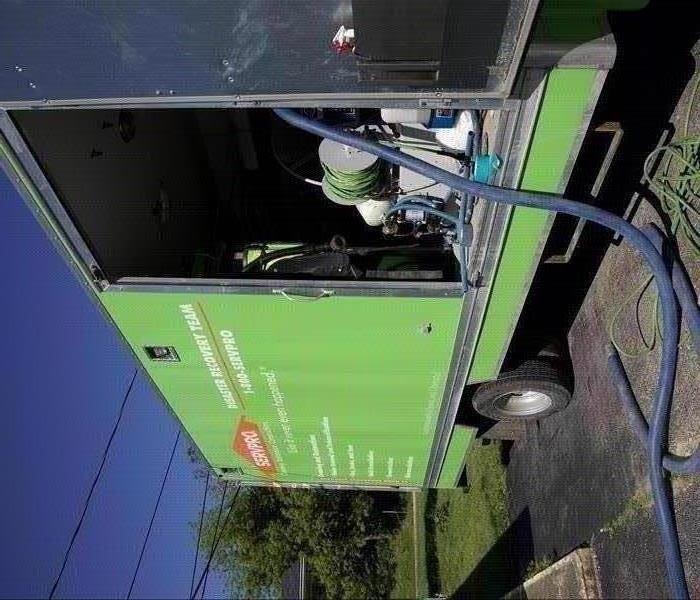 Knowing the common causes of mold growth can help you identify and mitigate these issues early on.
Knowing the common causes of mold growth can help you identify and mitigate these issues early on.
As a homeowner, it's important to understand the common causes of mold growth in your home so that you can take proactive steps to prevent it. Mold growth can be a significant concern, not only for the structural integrity of your home but also for the potential impacts on indoor air quality. Knowing the common causes of mold growth can help you identify and mitigate these issues early on.
Causes of Mold Growth
- Moisture and Humidity: One of the primary factors that contribute to mold growth is excess moisture and humidity in the home. This can result from water leaks, flooding, high indoor humidity levels, or inadequate ventilation. Areas such as basements, bathrooms, and kitchens are particularly susceptible to high humidity levels, making them prime locations for mold growth.
- Water Leaks: Leaky pipes, roofs, windows, and foundations can introduce moisture into your home, creating ideal conditions for mold growth. It's important to regularly inspect your home for any signs of water leaks and address them promptly to prevent the development of mold.
- Poor Ventilation: Inadequate ventilation can trap moisture indoors, providing an environment conducive to mold growth. Areas with poor ventilation, such as attics and crawl spaces, are prone to developing mold colonies if not properly ventilated.
- Flooding and Water Damage: Flooding and water damage, whether from natural disasters or plumbing issues, can lead to extensive moisture accumulation in the home, increasing the risk of mold growth. Proper drying and professional remediation are essential to prevent mold from taking hold after a flood or water damage event.
- Condensation: Condensation can occur on windows, walls, or other surfaces when warm, moist air comes into contact with cooler surfaces. This condensation can create localized areas of excess moisture, providing a breeding ground for mold growth if not addressed.
Understanding these common causes of mold growth is the first step in preventing and mitigating mold issues in your home. Regular maintenance, prompt repairs of water leaks, adequate ventilation, and proactive measures to manage indoor humidity levels can all contribute to a healthier indoor environment and reduce the risk of mold growth.
At SERVPRO®, we understand the importance of addressing mold issues promptly and effectively. Our team of professionals is equipped to assess, mitigate, and remediate mold problems to help restore your home to a safe and healthy condition. If you suspect mold growth in your home, don't hesitate to contact us for expert assistance.
By staying informed about the common causes of mold growth and taking proactive measures to address them, you can help protect your home and your family from the potential impacts of mold. Remember, prevention is key when it comes to managing mold growth in your home.
For more information and assistance with mold remediation, feel free to reach out to SERVPRO for expert guidance and support.
Responding to Burst Pipes: Emergency Actions to Take
6/6/2024 (Permalink)
Burst pipes can cause significant damage to your home, leading to water leaks, flooding, and potential structural issues if not addressed promptly. Whether due to freezing temperatures, aging pipes, or sudden pressure changes, burst pipes require immediate attention to mitigate the damage and prevent further complications. In this blog, we'll discuss essential emergency actions to take when faced with burst pipes, helping you minimize the impact on your home and belongings.
Shut Off the Water Supply
The first step in responding to burst pipes is to shut off the main water supply to your home. Locate the main shut-off valve, typically found near the water meter or where the main water line enters your home, and turn it off to stop the flow of water. This will prevent additional water from entering the affected area and minimize the extent of the damage.
Turn Off Electricity
If water has come into contact with electrical outlets, appliances, or wiring, it's crucial to turn off the electricity to avoid the risk of electric shock or fire. Locate the main circuit breaker panel and switch off the power to the affected areas of your home. If you're unsure whether it's safe to do so, contact a qualified electrician for assistance.
Drain Faucets and Pipes
After shutting off the water supply, open all faucets to drain the remaining water from the pipes. This will help reduce pressure buildup and alleviate stress on the plumbing system. Additionally, flush toilets to empty the tanks and bowls of water. Be sure to collect any water in buckets or containers to prevent further water damage.
Identify the Source of the Leak
Once the immediate threat has been addressed, locate the source of the burst pipe and assess the extent of the damage. Look for signs of water pooling, dripping, or spraying, as well as bulging or discolored areas on walls and ceilings. Identifying the source of the leak will help determine the best course of action for repairs.
Mitigate Water Damage
Take steps to mitigate water damage by removing excess water and drying out affected areas as quickly as possible. Use towels, mops, and a wet-dry vacuum to soak up standing water, and place fans and dehumidifiers to speed up the drying process. Remove waterlogged carpets, furniture, and belongings to prevent mold growth and further damage.
Contact a Professional Restoration Company
While you may be able to address some aspects of burst pipe cleanup on your own, it's essential to enlist the help of a professional restoration company for thorough cleanup and repairs. A reputable restoration company like SERVPRO® has the expertise, equipment, and resources to handle water damage restoration safely and efficiently, ensuring that your home is restored to its preloss condition.
Burst pipes can cause havoc in your home, but by taking immediate action and following these emergency steps, you can minimize the damage and facilitate the restoration process. Remember to shut off the water supply, turn off electricity, drain faucets and pipes, identify the source of the leak, mitigate water damage, and contact a professional restoration company for assistance. With swift and decisive action, you can mitigate the impact of burst pipes and protect your home from further harm.
Defending Against the Onslaught: Flood Barriers and Sandbags in Action
5/13/2024 (Permalink)
Floods can strike with little warning, causing widespread damage to homes, businesses, and communities. When facing the relentless force of rising waters, effective flood defense becomes paramount. Among the arsenal of tools, flood barriers and sandbags stand as stalwart guardians, offering a frontline defense against nature's fury. In this blog, we'll explore the effectiveness of these techniques and shed light on how SERVPRO of Clayton/Ladue plays a crucial role in flood recovery.
Understanding Flood Barriers: A Modern Shield
Flood barriers are engineered structures designed to prevent or redirect the flow of water, acting as a formidable defense against inundation. These barriers come in various forms, from portable barricades to permanent installations, each tailored to the unique needs of the area they protect. Some common types of flood barriers include:
Levees and Dikes
These earthen embankments are strategically constructed along rivers and coastlines to contain and redirect floodwaters. SERVPRO® has expertise in flood recovery, often involving addressing the aftermath of breaches in these protective structures.
Flood Walls
Vertical barriers made of concrete or other materials, flood walls shield urban areas from rising waters. When these structures face damage, SERVPRO steps in with efficient restoration to minimize the impact on the community.
Portable Flood Barriers
These versatile barriers are often used for temporary flood protection. SERVPRO's experience in disaster recovery includes assisting communities in deploying and managing portable barriers during flood emergencies.
The Timeless Efficacy of Sandbags
While flood barriers provide a robust defense, the simplicity, and accessibility of sandbags make them a timeless and effective tool in flood mitigation. Here's how sandbags contribute to flood defense:
Absorption and Weight
Sandbags are filled with sand or soil, creating a heavy barrier that absorbs and redirects water. This simple yet effective method is often employed in emergencies, and SERVPRO teams are equipped to assist in the aftermath.
Versatility
Sandbags can be strategically stacked to create protective walls around properties, redirecting water away from vulnerable areas. SERVPRO's expertise extends to mitigating water damage post-flood, including the removal and restoration of sandbag-protected structures.
Swift Deployment
In the face of impending floods, speed is crucial. SERVPRO's rapid response teams are well-versed in assisting communities with the efficient deployment of sandbags to protect properties.
When floods breach defenses, SERVPRO stands ready to assist in the recovery process. Our trained professionals are equipped to:
1. Assess Damage
SERVPRO teams assess the extent of flood damage, including structural and content damage, and develop a comprehensive plan for restoration.
2. Water Extraction
Utilizing advanced equipment, SERVPRO extracts standing water to minimize further damage and prevent mold growth.
3. Structural Drying and Dehumidification
Swift and thorough drying of affected structures is paramount in preventing long-term damage. SERVPRO employs state-of-the-art techniques to ensure a complete restoration.
4. Content Restoration
SERVPRO restores damaged contents, including documents, furniture, and personal belongings, utilizing specialized techniques to salvage items whenever possible.
5. Mold Remediation
The aftermath of flooding often includes the risk of mold growth. SERVPRO addresses mold issues promptly, implementing effective remediation strategies.
In conclusion, flood barriers and sandbags play pivotal roles in mitigating the impact of floods, offering valuable protection to homes and businesses. SERVPRO's commitment to flood recovery extends beyond the initial response, ensuring communities can rebuild and restore normalcy in the wake of disaster. As nature tests our defenses, the combined efforts of flood mitigation tools and expert restoration services stand as a formidable force against the rising tide.
The Silent Peril: Understanding the Dangers of Mold in Your Home
3/4/2024 (Permalink)
Mold, often unseen and unnoticed, can quietly wreak havoc within the confines of your home. While health concerns are commonly associated with mold, there are additional dangers that extend beyond the well-being of occupants. In this blog, we'll explore the silent but impactful threats posed by mold, emphasizing the need for vigilance, preventive measures, and professional remediation.
Structural Integrity
One of the primary dangers of mold is its potential to compromise the structural integrity of your home. Mold colonies thrive in damp and humid conditions, making porous materials like wood susceptible to decay. Over time, this can weaken the framework of walls, ceilings, and floors, leading to costly repairs.
Mold doesn't discriminate when it comes to materials. It can latch onto various surfaces, causing deterioration and degradation. From drywall to insulation, mold poses a threat to the longevity and functionality of materials throughout your home.
Property Devaluation
The presence of mold can impact the value of your property. Prospective buyers or renters may be deterred by the potential for structural damage and the perception of ongoing maintenance concerns. Addressing mold issues promptly is essential for maintaining or enhancing property value.
Mold has a knack for hiding in unseen or inaccessible areas, complicating detection. Behind walls, beneath flooring, or in crawl spaces—these hidden infestations can silently spread and intensify, making regular inspections and preventive measures crucial.
Persistent Odors and Staining
Mold growth often produces musty and unpleasant odors. These odors can persist even after visible mold has been removed. Lingering smells can impact the comfort and enjoyment of your home, creating an unpleasant living environment.
Mold can leave behind unsightly stains and discoloration on walls, ceilings, and other surfaces. These cosmetic issues can be challenging to address and may require extensive restoration efforts to restore the aesthetic appeal of your home.
Rapid Spreading
Once mold takes hold in one area, it can spread rapidly. Mold spores are easily transported through the air or by attaching to clothing and pets, leading to the colonization of new areas within your home. This rapid spreading amplifies the potential dangers of mold.
In addition to structural damage, mold can harm personal property. Furniture, clothing, and other belongings can fall victim to mold infestations, resulting in permanent damage or the need for extensive cleaning and restoration.
Insurance and Legal Implications
Mold-related issues can lead to complications with insurance claims and legal disputes. If not addressed promptly and thoroughly, insurance coverage may be affected, and legal challenges may arise. Taking proactive steps to prevent and remediate mold is essential for avoiding potential legal and insurance issues.
Dealing with mold issues often requires professional remediation services. While an upfront cost, professional remediation is an investment in preventing further damage and ensuring that mold is eradicated thoroughly and safely.
The dangers extend beyond the well-being of occupants. Mold poses a silent yet formidable threat to the structural integrity, aesthetics, and overall value of your home. Vigilance, regular inspections, and a proactive approach to moisture management are essential in minimizing the risks associated with mold. By recognizing the broader dangers and taking decisive action, homeowners can ensure a safer, more resilient living environment for themselves and future occupants.
For professional mold remediation services and expert guidance on cleaning mold damage, contact SERVPRO®. They have the necessary expertise, equipment and experience to handle mold removal, ensuring your home is restored to pre mold conditions.
The Step-by-Step Process of Water Damage Restoration: Restoring Your Property after Water Damage
2/5/2024 (Permalink)
Water damage can wreak havoc on your property, causing structural damage and potential health hazards. A thorough water damage restoration process is essential to ensure the safety of your home and minimize further destruction. In this blog, we will walk you through the step-by-step process of water damage restoration, helping you understand what to expect and how to effectively restore your property.
Emergency Contact and Assessment
The first step is to contact a professional water damage restoration company, such as SERVPRO, who can provide immediate assistance. They will assess the extent of the damage, determining the category and class of water damage to create a tailored restoration plan.
Water Extraction
The removal of excess water is crucial to prevent further damage and mold growth. Professionals will use specialized equipment, such as pumps and commercial-grade extractors, to thoroughly remove standing water from your property.
Drying and Dehumidification
Once the water is extracted, the drying and dehumidification process begins. Industrial-grade air movers and dehumidifiers are strategically placed to facilitate airflow and draw out moisture from walls, floors, and other affected surfaces. This step aims to thoroughly dry the area, reducing the risk of further damage and mold growth.
Cleanup and Sanitization
Water damage often brings along contaminants, bacteria, and odors. The cleanup process involves the removal of damaged materials, such as carpets, drywall, and furniture, followed by thorough cleaning and disinfection. Professionals may utilize antimicrobial treatments to ensure a safe and sanitary environment.
Restoration and Repair
After the affected area is completely dry and sanitized, restoration work begins. This may involve repairing or replacing damaged flooring, walls, insulation, and other structural components. Skilled professionals will work to restore your property to its pre-damage condition, ensuring both functionality and aesthetics.
Monitoring and Preventative Measures
Even after the restoration process is complete, it is essential to monitor for any signs of hidden moisture or mold growth. Professionals may use moisture meters and thermal imaging cameras to detect potential issues. Implementing preventative measures, such as improving drainage, sealing gaps, and addressing plumbing issues, will help minimize the risk of future water damage.
Insurance Claims
Throughout the process, it is essential to document all damage, take photos, and keep detailed records of expenses. This information will be valuable when filing an insurance claim. Communicate with your insurance provider and provide necessary documentation to ensure a smooth and efficient claim process.
Water damage restoration requires a systematic approach to ensure the safety of your property and protect against further damage. By following the step-by-step process of emergency contact and assessment, water extraction, drying and dehumidification, cleanup and sanitization, restoration and repair, monitoring, and insurance claims, you can effectively restore your property to its pre-damage condition and regain peace of mind.





 24/7 Emergency Service
24/7 Emergency Service





